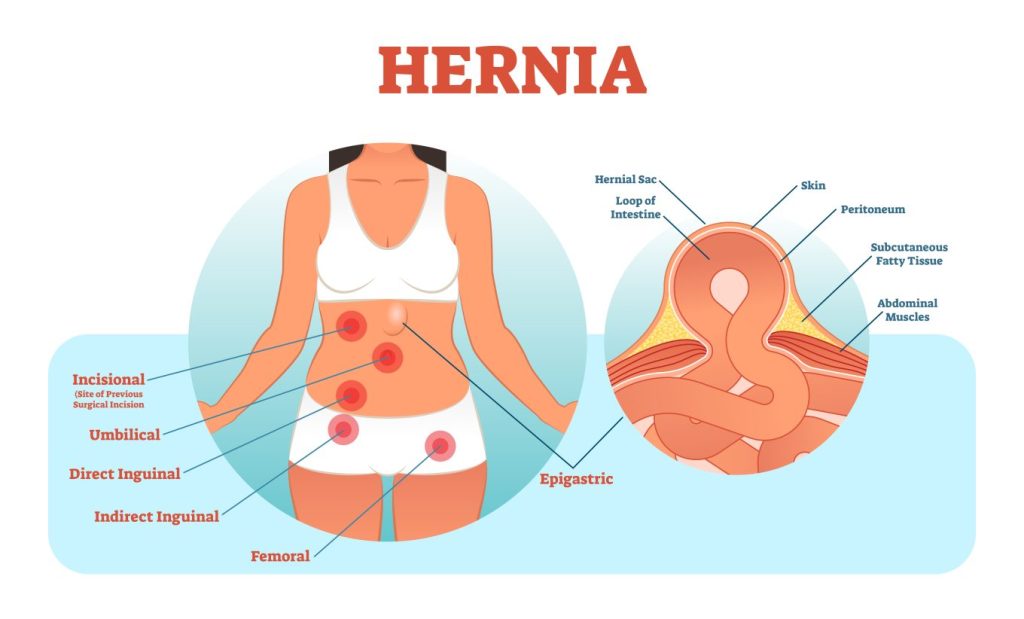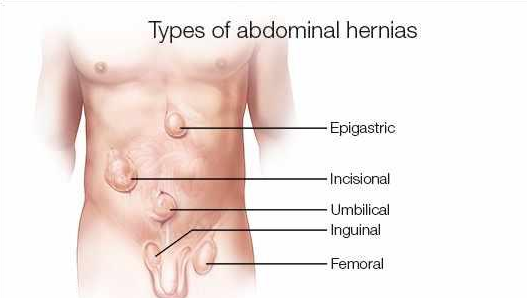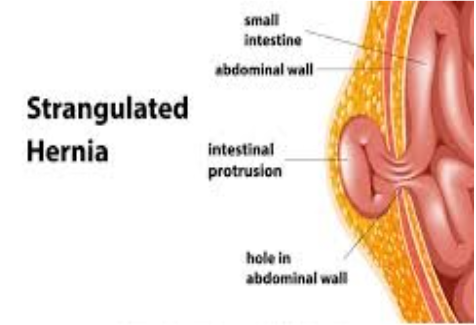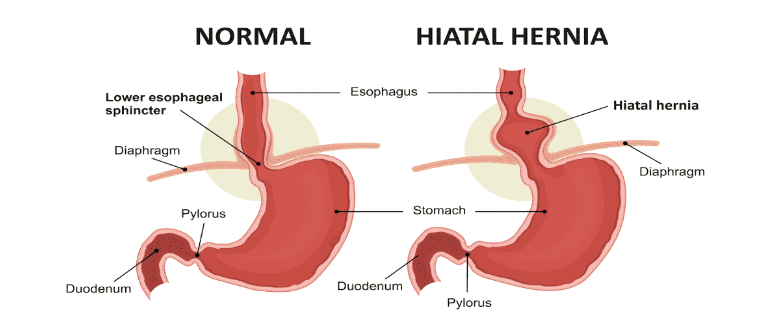
So you’re having hernia surgery. Understanding the cost is key. And beyond the medical bits, understanding how your health insurance can help with those costs is just as important. A health insurance comparison will give you insights into policies that cover surgical procedures so you’re informed before you go under the knife. This article breaks down the costs of hernia surgery and helps you plan for the procedure and the finances. So you’re ready. So you’re prepared.
A hernia occurs when organs, like the intestines, protrude through a weakened part of the abdominal wall. If left untreated, this weak spot in the muscle can enlarge, allowing more tissue or organs to push through, creating a sac-like bulge, a defining feature of a hernia. The weakened abdominal wall can either be present from birth or develop later in life. While the groin is the most common location for hernias, they can also appear in other areas, such as the navel. If the bulge can be gently pushed back into the abdominal cavity, it’s a reducible hernia. If the bulge cannot be pushed back in, it’s classified as a non-reducible hernia, which can lead to severe complications. Both types of hernias require surgical repair. In Australia, around 40,000 individuals undergo hernia surgery annually, making it one of the most frequently performed operations.Symptoms
Hernia symptoms can differ based on their location and how serious they are. Common symptoms may encompass:
- The presence of a noticeable bulge or swollen area.
- A sensation of heaviness or discomfort in the abdominal region, especially when bending forward.
- Pain or discomfort, especially during physical activities like lifting or carrying heavy objects.
- Digestive issues like constipation.
- The lump vanishes when the individual is lying down.
- The lump increases in size when coughing, straining, or standing up.
Types of Hernia
Hernias can occur in different parts of the abdominal wall due to variations in muscle strength. The main types of hernias are:
Inguinal Hernia is the most common type, representing over 90% of hernias. It occurs in the groin when a section of the intestine pushes through a weakened muscle ring in the groin area. Inguinal hernias are more prevalent in middle-aged men.
Femoral Hernia: This type appears high on the thigh, near the junction of the leg and body. Like inguinal hernias, intestines push through a weak muscle ring in the femoral canal. Femoral hernias are more common in women and carry the risk of strangulation, a severe complication requiring prompt medical attention.
Umbilical Hernia: In this case, a portion of the intestine protrudes through a weakened area near the navel (belly button). Umbilical hernias are more common in newborns but can also affect overweight women or those who have had multiple pregnancies.
Incisional Hernia: These hernias occur at a previous abdominal surgery site. The surgical repair weakens the abdominal wall, allowing the intestines to push through the closed incision.
In summary, hernias can occur in various locations on the abdominal wall, with the most common types being inguinal, femoral, umbilical, and incisional hernias. Each type has distinct risk factors and characteristics.

Strangulated Hernia:
A non-reducible hernia occurs when it's impossible to push the herniated tissue back through the abdominal wall manually. In this situation, the intestinal loop remains tightly trapped by the surrounding muscle ring, potentially causing it to swell and leading to strangulation, which is more common in femoral hernias.
Signs of a strangulated hernia encompass nausea, vomiting, and intense pain. Immediate medical attention and surgical intervention are essential. If left untreated, a strangulated hernia can result in gangrene affecting the trapped bowel.

Hiatal Hernia
A hernia's formation is linked to a weakened tissue area that separates various compartments within your body. This weakened spot serves as an entry point for a hernia to develop. In the case of a hiatal hernia, it occurs through an existing opening called the esophageal hiatus, where the esophagus passes through the diaphragm. A slight widening of this opening is all that's needed for a hiatal hernia to occur.
The initial weakness leading to a hernia can sometimes be attributed to a specific injury, surgery, or birth defect. However, more frequently, it results from cumulative damage over the years due to everyday stress and strain. Various factors contributing to increased pressure within the abdominal cavity can gradually weaken the diaphragm, making it susceptible to hiatal hernias. Some of the common factors that generate abdominal pressure and contribute to hiatal hernias include
- Persistent coughing or sneezing.
- Chronic straining during bowel movements (constipation).
- Sustained obesity (having a BMI greater than 30).
- Frequent episodes of vomiting.
- Intense physical exercise or heavy lifting.
- Pregnancy and the process of childbirth.

Surgical procedures for a hernia:
Both reducible and non-reducible hernias necessitate surgical repair. The specific procedures employed depend on the hernia's location. Surgery typically involves opening the abdomen and using stitches and synthetic mesh to close and reinforce the weakened muscle area. In the case of inguinal hernias, laparoscopic surgery can be an option, where a thin instrument called a laparoscope is inserted to repair the hernia from the inside, avoiding the need for large abdominal incisions.
Additionally, addressing factors that may have contributed to the hernia, such as obesity or weak muscle tone, is essential. Nevertheless, hernias may recur in approximately one out of ten cases, necessitating further surgical intervention.

Key points to remember about hernias are:
- Hernias occur when organs, like the intestines, protrude through a weakened part of the abdominal wall
- The groin is the most frequent location, making up nine out of ten hernia cases.
- Surgical repair is the sole effective treatment for hernias.
How much does it cost for surgery?
For patients who underwent a Femoral or inguinal hernia repair in a private healthcare setting across Australia and had private health insurance, approximately 57% of them incurred out-of-pocket expenses. Patients typically had an average out-of-pocket cost of $400 among those individuals.
Medicare contributed $700 towards the expenses.
The insurance provider typically covered $700.
Specialist fees, on average, amounted to $2,000.
It's important to note that these figures can vary depending on individual circumstances, and the costs associated with hospital fees, typically around $3,600 for this procedure, are usually covered by private health insurance, with the patient potentially responsible for an excess or co-payment.
Surgery cost per state
The table below provides the following information categorised by state and territory:
The percentage of patients who did not incur out-of-pocket costs. In these cases, both Medicare and private health insurance covered the specialist's fees.
Specialists typically charged the average amount when patients did have an out-of-pocket cost for this service.
The typical payment made by patients in cases with an out-of-pocket expense.
Certain states or territories may not be included in the data due to privacy concerns or insufficient information. This data pertains to all services utilising this specific MBS item, encompassing various medical specialties, during the 2021-22 period.
| Tas | WA | SA | QLD | VIC | ACT | NSW | |
|---|---|---|---|---|---|---|---|
| % with no out-of-pocket costs | 42% | 69% | 43% | 28% | 34% | 14% | 53% |
| Typical specialists' fees | $1800 | $1800 | $1600 | $2100 | $1800 | $2200 | $2200 |
| Patients typically paid | $330 | $300 | $200 | $500 | $280 | $1100 | $560 |
What's Covered in the Fees and Costs:
The fees and costs encompass all services provided by each specialist and healthcare provider involved in your hospital stay. The expenses related to assistant surgeons and anaesthetists are also included when applicable to the procedure. These costs are based on data from the year 2021-22 and represent a typical patient experience.
Each procedure is associated with a primary number on the Medical Benefits Schedule (MBS), an MBS item number. While additional items may be claimable simultaneously, they can vary from one patient to another. All figures, including the Medicare benefit amount, have been rounded to the nearest dollar.
It's important to note that individual patient costs may differ due to specific circumstances. For a precise quote, it's advisable to consult with your specialist.
What's Not Covered in the Fees and Costs:
The displayed fees and costs do not include
- Specific tests or treatments may be required, such as diagnostic imaging or pathology services.
- Costs associated with the assistant surgeon and/or anaesthetist that are necessary for the procedure but are not covered by Medicare.
- Private health insurance excess amounts
- Expenses related to aftercare.
- Costs associated with pharmaceuticals and other incidentals.
- Services provided before or after the day of the procedure.
- Hospital fees like accommodation, theatre, or medical device fees. Some hospitals may not accept insurance payments, potentially resulting in additional patient costs. You can learn more about agreement hospitals to determine if this applies to you and your chosen hospital.
- Please note that you should consult your private health insurer for in-hospital services to understand their costs and any expenses you may need to cover yourself.
Regarding the typical amounts displayed, they may not add up to the total specialists’ fees because they are independent statistics. Each dollar represents only the typical (median) amount for that specific dataset, rounded to the nearest dollar. For instance, the amount typically paid by patients is based on what all patients paid for the same service, while the typical specialists’ fee is based on all fees charged by specialists providing that service.
Be prepared.
For several reasons, private health insurance is crucial for individuals facing hernia-related medical expenses: It is essential to assess and review your health insurance coverage to ensure that it aligns with your specific needs and includes hernia repair as a covered medical procedure. Health Deal is a free private health insurance comparison service that helps you review and assess your coverage in minutes. It's a valuable resource for ensuring you have the right health insurance plan. With Health Deal, you can find your ideal private health policy, which provides a huge range of benefits, including:
- Choice of Healthcare Provider: Private health insurance often lets you choose your preferred healthcare provider and hospital. This can be crucial for individuals who want to select a specific surgeon or hospital known for expertise in hernia repair.
- Reduced Wait Times: In the public healthcare system, there can be waiting lists for elective surgeries, including hernia repairs. Private health insurance can help you access treatment more quickly, reducing the discomfort and potential complications associated with untreated hernias.
- Choice of Timing: With private insurance, you have more control over the timing of your surgery. You can schedule it conveniently, reducing disruptions to your work and personal life.
- Covering Out-of-Pocket Costs: While private health insurance may not cover all expenses, it can significantly reduce the out-of-pocket costs associated with hernia repair surgery. This can include hospital fees, surgeon fees, and anaesthetist fees.
- Access to Advanced Procedures: Some private health insurance plans cover advanced surgical techniques and materials that may not be available in the public system. This can lead to better outcomes and shorter recovery times.
- Choice of Room Type: Private health insurance often allows you to choose the type of room you stay in during your hospital stay, such as a private room. This can provide more comfort and privacy during recovery.
- Continuity of Care: Private health insurance can ensure that you receive ongoing care from the same healthcare team throughout your treatment and recovery, promoting a higher level of personalised care.
- Peace of Mind: Having private health insurance can offer peace of mind, knowing you have financial protection in case of unexpected healthcare needs. This can reduce stress during an already challenging time.
It’s important to carefully review the terms and coverage of your private health insurance policy, including waiting periods and any pre-existing condition clauses. Additionally, consider your individual health needs and financial situation when deciding whether private health insurance is essential for hernia-related care.


 Single
Single Couple
Couple Family
Family Single Parent
Single Parent